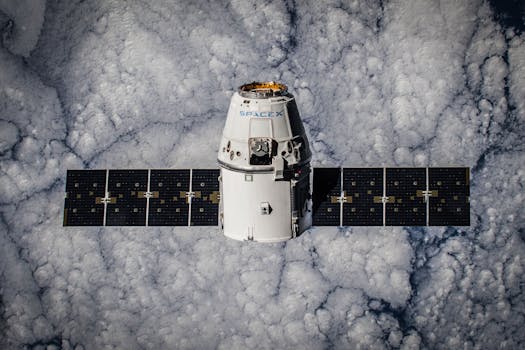The Future of Satellites: Revolutionizing Global Connectivity and Exploration

The Future of Satellites: Revolutionizing Global Connectivity and Exploration
The future of satellites is an exciting and rapidly evolving field, with significant advancements in technology and applications. As we look to the future, it is clear that satellites will play an increasingly important role in shaping our world, from revolutionizing global connectivity to enabling new scientific discoveries. In this article, we will explore the latest developments and trends in the field of satellites, and examine the potential impact of these advancements on our daily lives.
Introduction to the Future of Satellites
For decades, satellites have been a crucial component of modern life, enabling global communication, navigation, and weather forecasting. However, the future of satellites holds even greater promise, with the potential to transform industries, connect remote communities, and unlock new scientific breakthroughs. With the increasing demand for satellite-based services, the industry is witnessing a surge in innovation, driven by advancements in technology, materials, and manufacturing processes.
Advances in Satellite Technology
One of the most significant trends shaping the future of satellites is the development of smaller, more efficient, and cost-effective satellite designs. The rise of CubeSats, nano-satellites, and micro-satellites has democratized access to space, enabling new players to enter the market and driving down costs. These smaller satellites are also more agile, with faster development cycles and more rapid deployment, allowing for greater responsiveness to changing market conditions.
Another key area of advancement is in the field of propulsion systems, with the development of more efficient and sustainable propulsion technologies. Electric propulsion, for example, offers significant advantages over traditional chemical propulsion systems, including greater fuel efficiency, lower mass, and reduced environmental impact. These advancements are enabling satellites to operate for longer periods, with greater maneuverability and flexibility.
Applications of Satellites in the Future
The future of satellites holds tremendous potential for transforming a wide range of industries and applications. One of the most significant areas of growth is in the field of satellite internet, with companies like SpaceX, Amazon, and OneWeb launching constellations of satellites to provide global broadband coverage. These satellite networks have the potential to connect remote and underserved communities, bridging the digital divide and enabling new economic opportunities.
Satellites are also playing an increasingly important role in the field of Earth observation, with applications in weather forecasting, climate monitoring, and natural resource management. High-resolution imaging satellites, for example, are enabling scientists to track changes in the environment, monitor crop health, and predict natural disasters. These advancements are also driving innovation in fields like precision agriculture, urban planning, and disaster response.
Conclusion and Future Outlook
In conclusion, the future of satellites is an exciting and rapidly evolving field, with significant potential for transforming global connectivity, exploration, and communication. As technology continues to advance and new applications emerge, it is clear that satellites will play an increasingly important role in shaping our world. Whether it is connecting remote communities, enabling new scientific discoveries, or driving innovation in industries like agriculture and urban planning, the future of satellites holds tremendous promise for a brighter, more connected future.




